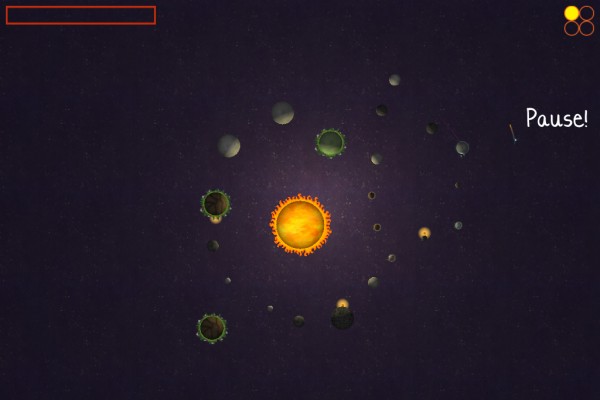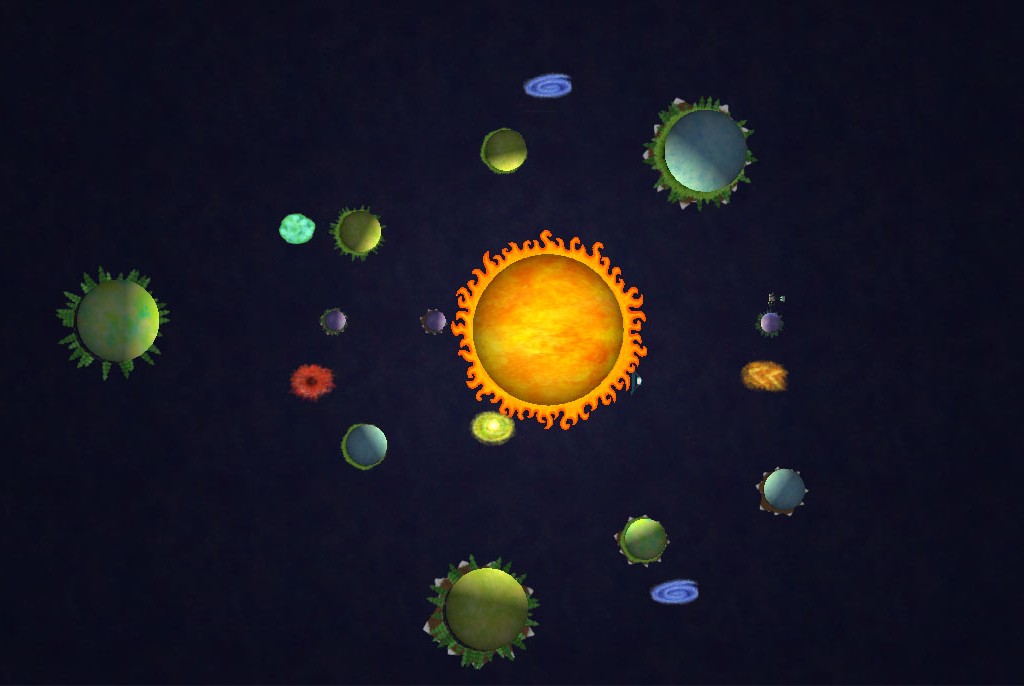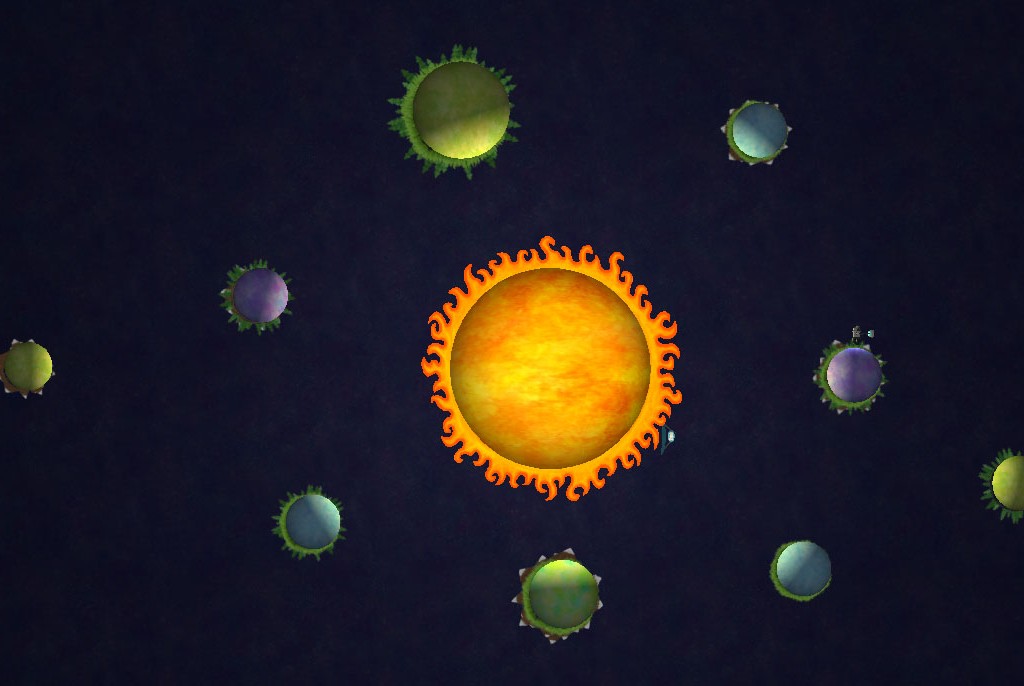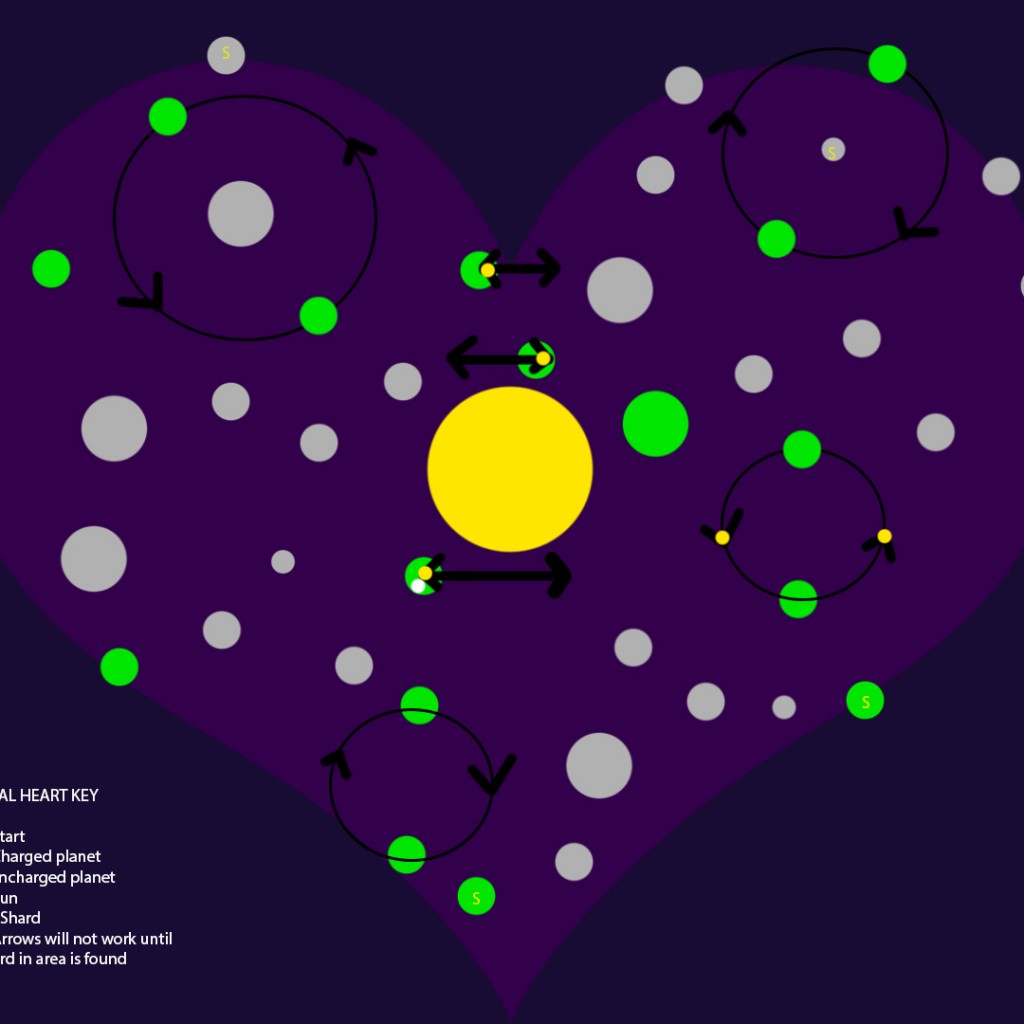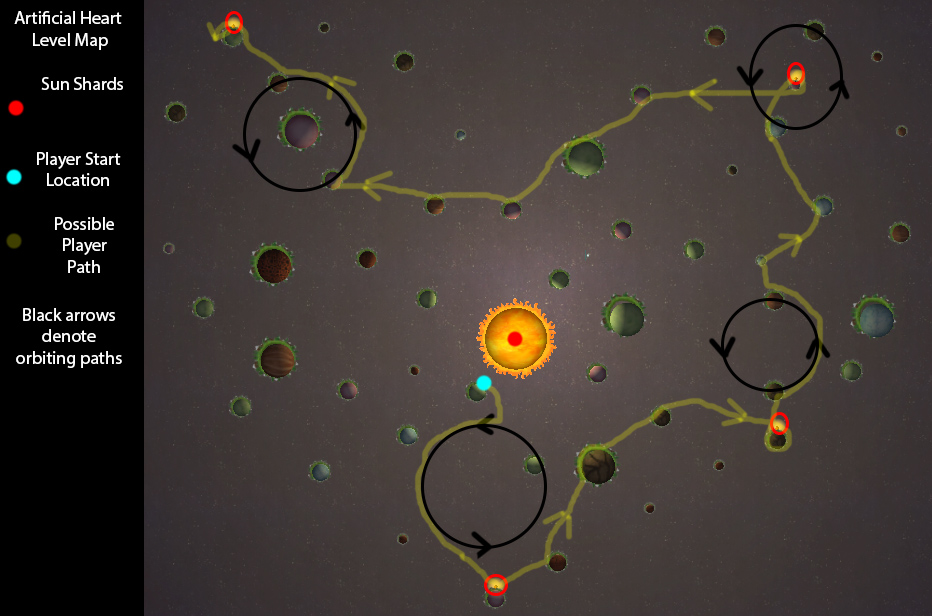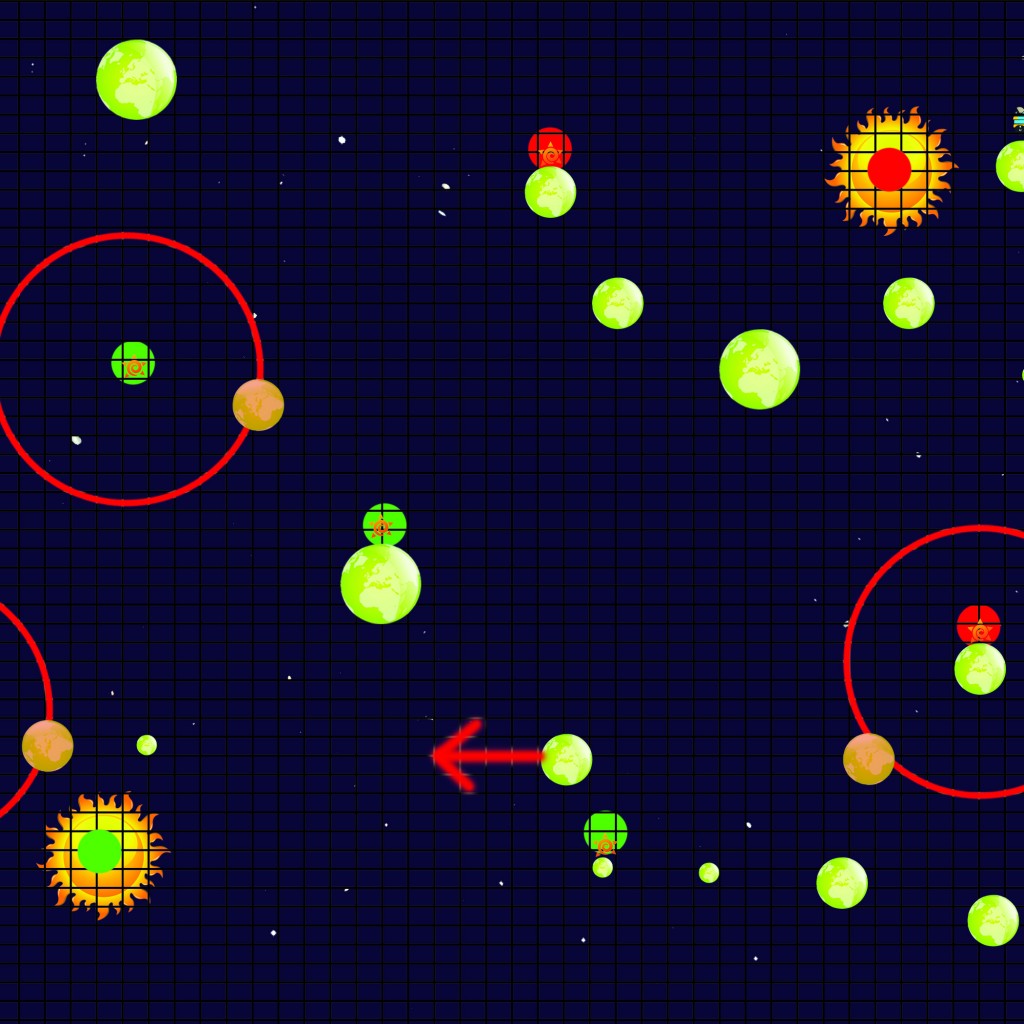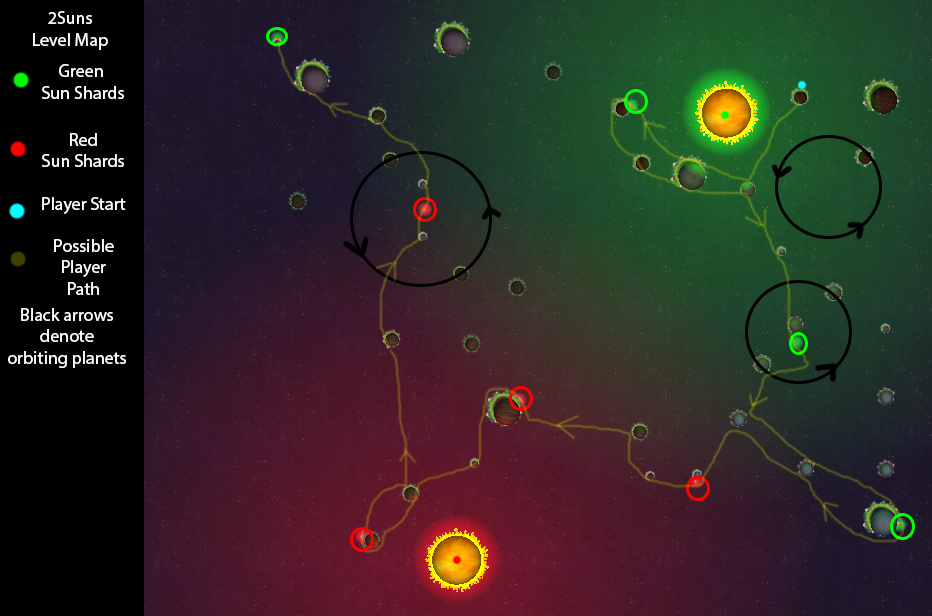Game Name: SunBots Production Cycle: September 2013- April 2014 Group Size: 4, then 8
Team Members:
Matt Surdej,Christopher Mastenbrook, Remy Vogler*, Matt Jordan*-Designer
Melissa Gill- Programmer
Desiree Fernandes, Liznel Pina*- Artist
Ryan Steinmetz*- Producer
*denotes people who were added to the project
Check it out on the Google Play Store: https://play.google.com/store/apps/details?id=com.TeamSupergeneric.SunBots
SunBots is a mobile platformer in which the player uses gravity based jumps and boosts to navigate solar systems. On the player’s journey they collect sun shards in order to restore dying suns. As the suns revive, life is brought back to the surrounding planets, shifting the accessible space to explore. I have worked on the project from Day 1, developing the framework, the levels, and audio for the game. Since then, I have watched it grow, presented it to various people, and have lead the design team in creating and refining our idea.
OVERALL DESIGN:
When first coming up for ideas for games during the first part of SunBot’s production, our programmer had the idea for a game involving gravity. Our first experiment with this was in a 3D environment, which was quickly found to be confusing and nauseating. However, we thought we were on to something, and switched the game to a 2D perspective. In the meantime, the other designer and I came up with the idea behind the game: a robot trying to fix a dying sun, by feeding it energy. The game would focus on jumping from planet to planet, collecting energy from the planets,and feeding the energy to the sun to prevent it from going out. From these ideas, we began to construct the game over the course of the next 8 weeks.
These ideas constantly had venues of feedback, from which we improved and tuned the game. One of the best pieces of feedback we got was from one of my professors. After playing through our tutorial, and the first two levels, he told us that he didn’t understand quite a number of our game’s rules. While we had thought that most of these rules were simple to understand, we found that people were missing parts of our game. To fix this, we broke down the pieces of our tutorial, breaking it into 4 parts, to give each mechanic its own space (see below). This phase of production came to a culmination with our school’s mid year show, where I presented the game to an audience of peers, teachers, and other associates. Thanks to the hard work the team had put in, along with my strong presentation of our game, our game was green-lit to continue production into the spring semester.
Mid Year Video:
For our spring semester, we added 2 more designers, another artist, and a producer to help keep our game on track. One of the first things we did, with encouragement from a number of our teachers, was switch our game from PC to mobile. From some of our first tests on mobile devices, we found that our game was something that could effectively work on mobile. However, throughout the first few weeks of production , we made massive changes to our game. We wanted our game to feel like a platformer, but our new designers questioned the act of collecting energy and firing it into the sun. They felt that the acts of flying around the solar system, collecting energy, and then firing them into the sun, felt disjointed, and that shooting energy into the sun slowed the game down. while I was originally hesitant to alter the game I had been working on for months in such a big way, I eventually saw the point of such a change. Looking to focus more on the platforming aspects of our game, we changed a number our mechanics that had been in the first part of our game. The goal of the game became finding pieces of the Sun, called Sun Shards. These Sun Shards would be placed in the level, and once collected by the player, would cause the sun to grow, and cause dead planets to turn alive. The energy that the player had collected from the planets now was capped at a certain point, only allowing for 3 boosts, this energy was refilled whenever the player landed on a live planet. The boost was simplified to be a simple flick, no longer having a charge functionality to it. Enemies, who stole energy off the planets in the first version, now created a force field that pushed the player away. We continued working around the these ideas, pushing for more platforming and exploration, eventually making a game that we were all proud of.

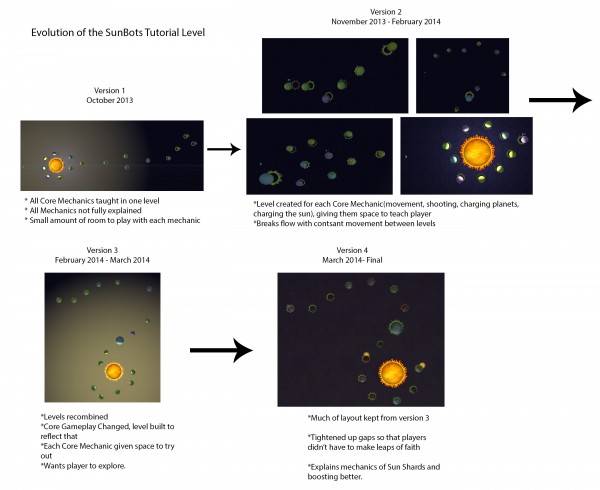
-Final Game Design Document of SunBots: GDD_SunBots_v3
LEVEL DESIGN:
One of my biggest parts in SunBots was creating the game’s levels. During the first half of the project, our levels were mainly circular, with the majority of planets being around the sun. This lead the levels to being very circular, similarly built, and most players ended up staying in a small portion of the map, harvesting energy.
When we began to re-think our game, we started to look over how we could improve flow throughout the levels, and make the players explore more of the level. To that end, we adopted a similar approach seen in games like Castlevania and Metroid. Many of the levels are open-ended, allowing players to explore the level and complete it in a number of ways, getting whatever Sun Shard they want to first. This can be seen in a variety of the levels I created, such as BigAndSmall, Artificial Heart, 2Suns, and Plus. For example, in the level Artificial Heart, I put the four Sun Shards in the level in four different quadrants of the map.In these levels, I allowed for exploration to be a factor when creating these levels, so that the player always has multiple paths for completing a level. While there is almost often an optimal path for the player to take, the levels support many pathways, so the player never has to play the level the same way twice.
AUDIO:
I also created the audio for SunBots. When making the music, I wanted to create something that was open and calming, that had a slight technological beat to it. I also had that in mind when creating the various sound effects for the game. As the game progressed, I updated and changed some of the sound effects, allowing them to fit the way our game had changed.
Audio Examples:
POSTMORTEM:
For me, SunBots has been a wonderful learning experience and a tremendous success. During the first part of production, one of the biggest challenges was presenting what we had made to our peers, particularly at the senior show. However, after the presentation, many of my peers who approached me afterwards said that I had one of the best presentations at the show. However, the challenges of the first semester pale in comparison with those of the second. Between porting our game to mobile, and overhauling a lot of our design, we had a lot of work to accomplish. It was particularly hard during the time we were overhauling our design. As the lead designer, I knew the changes we were making were going to make our game more enjoyable, but part of me, who had worked on the game for months, was reluctant to change a lot of the ground work we had laid down. This was a great lesson in learning when to take a step back from your work and see what’s wrong with it. Leading three other designers was not much of a challenge, thanks to previous leadership holdings, and it was good to have a producer to help keep things organized. Creating levels for this new design gave me and the other designers more creative space to play around in, which made for more engaging levels. I am excited to see what people think when we release the game, and will be proud to see my name on this work. Since releasing the game, we have gotten over 100 downloads, as well as receiving awards from the MassDigi Game Challenge of Spring 2014 and RPI GameFest 2014.
